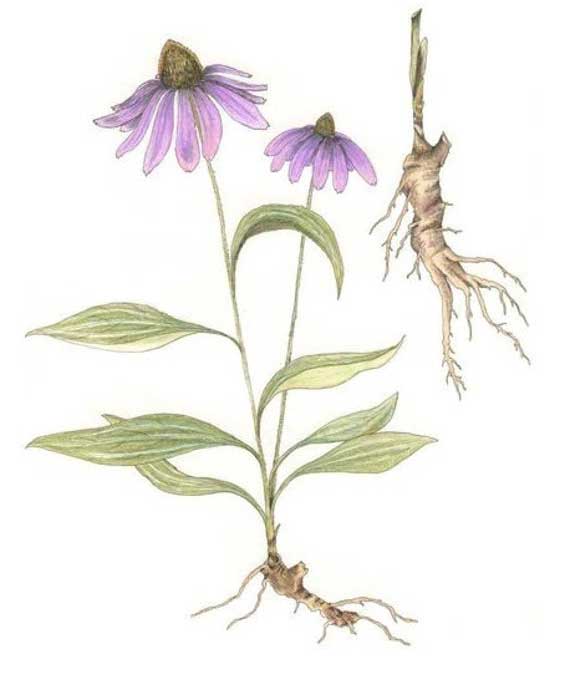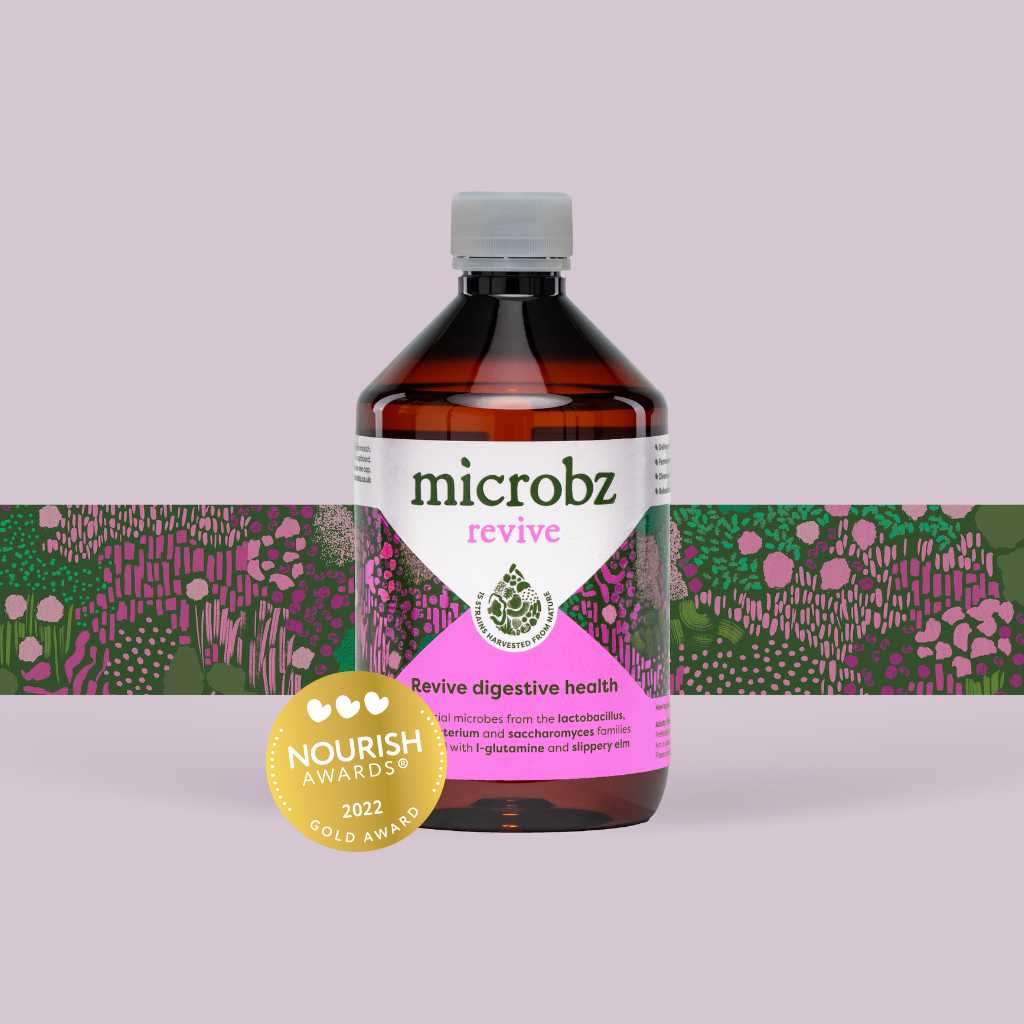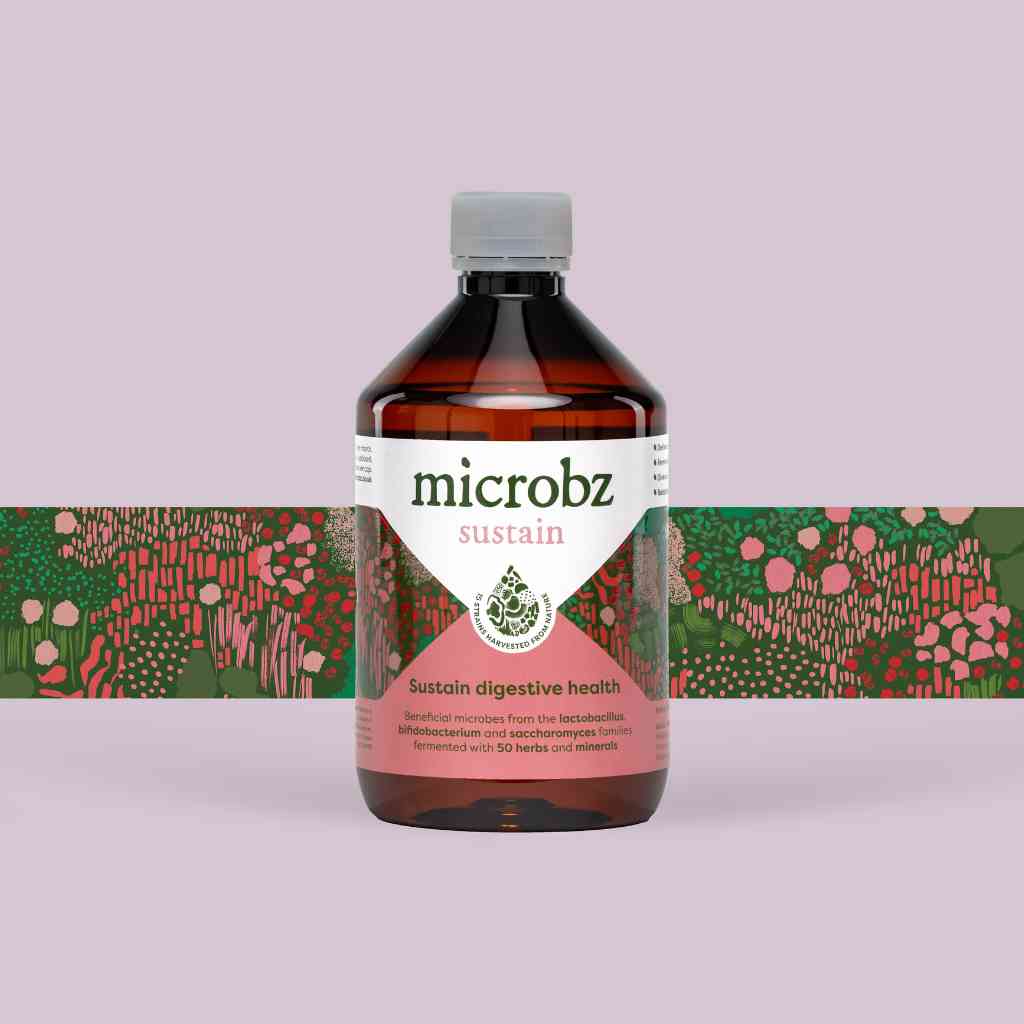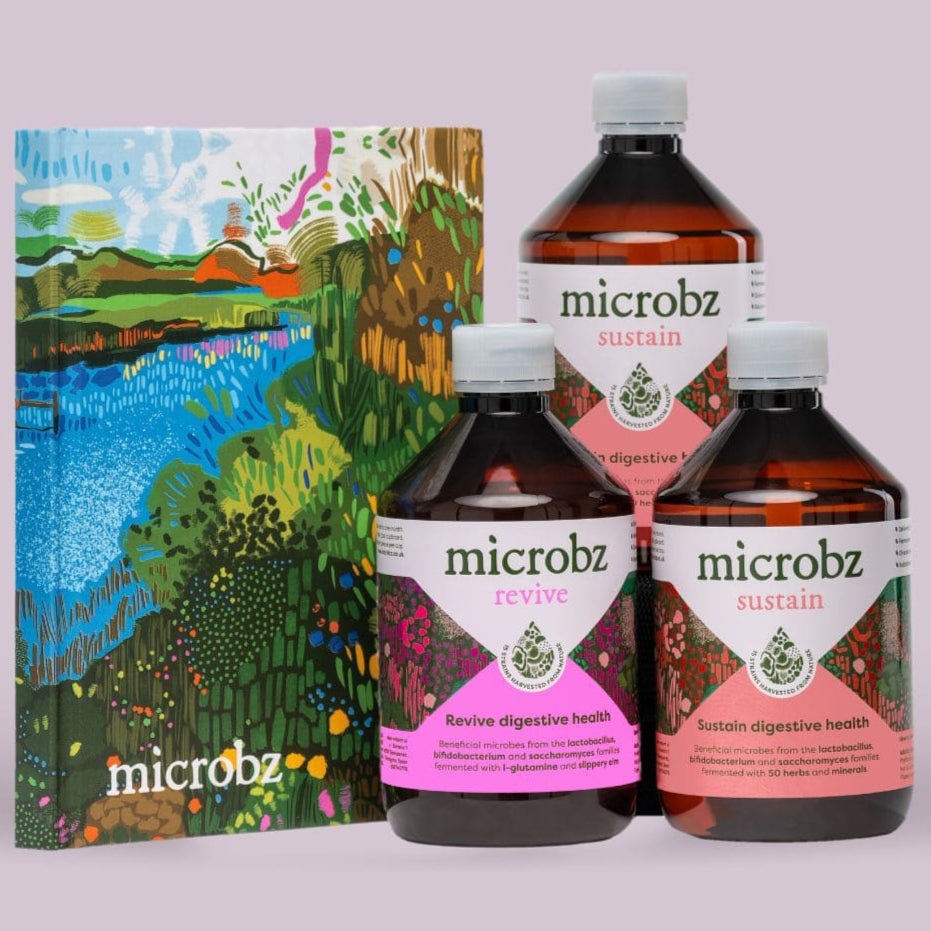Purple coneflower
Echinacea angustifolia, Echinacea purpurea

Family: Asteraceae
Which probiotic is it in?: Purple coneflower is a key herb in Immunity and Kids
Habit and cultivation: Native to North America and southern states of Canada, growing in open woods, thickets and prairies. Grows by root division or from seed. Often doesn’t flower until second or third year but then blooms from July, the flowers vary in colour from off-white to pale purple. Likes a sunny open spot and is drought tolerant.
Actions (known for): Immune enhancing, anti-viral, anti-fungal, anti-bacterial, anti-inflammatory, anti-tumor, laxative, stimulate bile secretion, wound healing and lymphatic. Topically: antiseptic
History of Purple coneflower
Parts used from the Purple coneflower
The fresh or dried root harvested after flowering is over.
Constituents (bio available chemicals):
Alkylamides: mainly isobutylamides (which cause characteristic tingling in the mouth). Caffeic acid esters; including echinacoside. Cynarin. Essential oil: polyacetylenes, polysaccarides and non-toxic pyrrolizidine alkaloids.
Nutritional constituents:
Vitamins: A, C and E. Minerals: iron, iodine, copper, potassium and sulphur.
Indications:
Allergies/sensitivities, autoimmune disease, boils, sinusitis, chemotherapy (to minimise the side-effects of), common cold, herpes simplex, immune deficiency, viral and bacterial infections, inflammation in connective tissue, influenza, post-viral syndromes, septicemia (mild), skin disorders, tonsillitis, wounds internally and topically.
Dosage:
Liquid extract (1:2): 20 – 40ml per week. Decoction/infusion of dried herb: 0.5 – 1g 3 x daily.
British Herbal Pharmacopoeia
Boils, carbuncles and abscesses.
Cautions for therapeutic doses
In fluid extract, good quality can cause excessive salivation. Caution for those with a tendency to allergic reactions, especially to Asteraceae. Minimal risk with root preparations.




